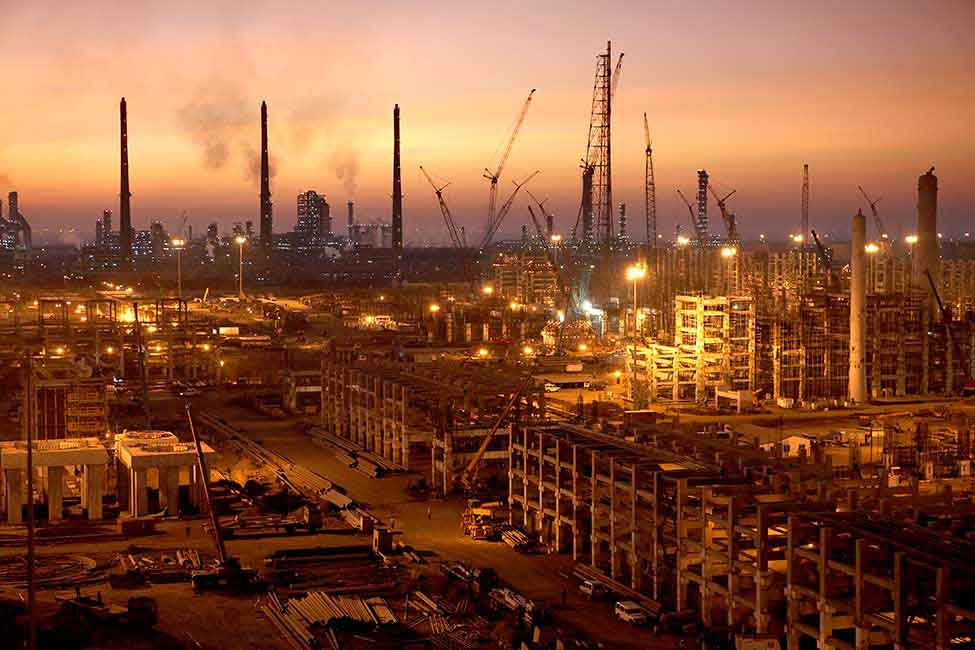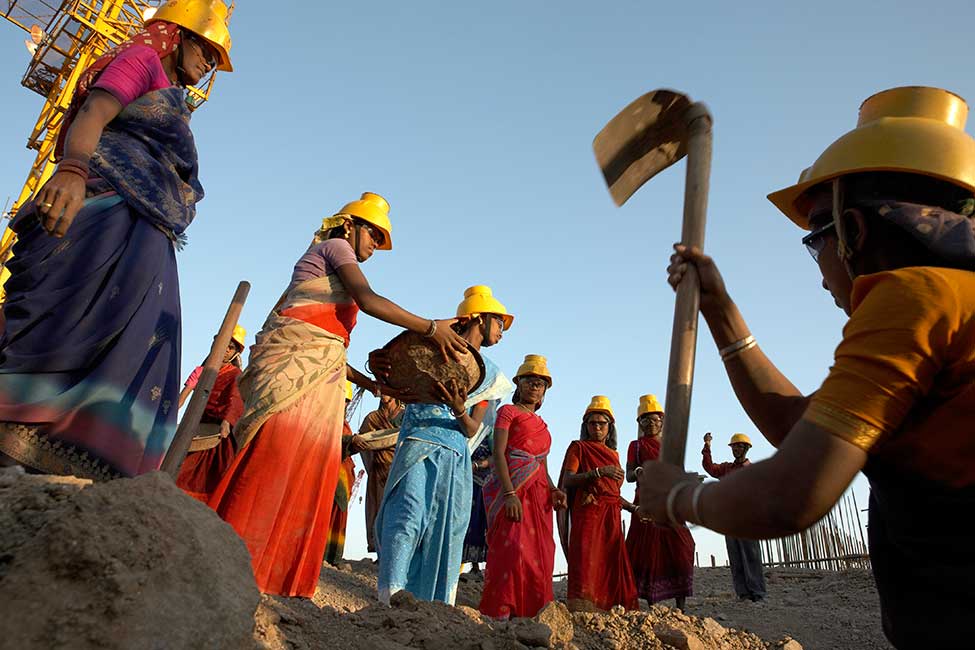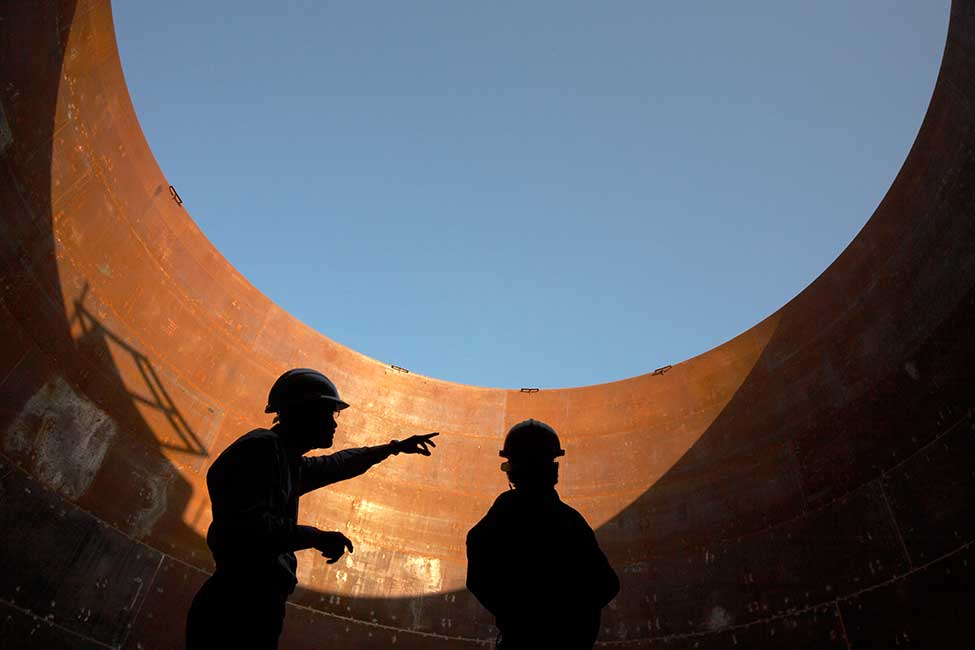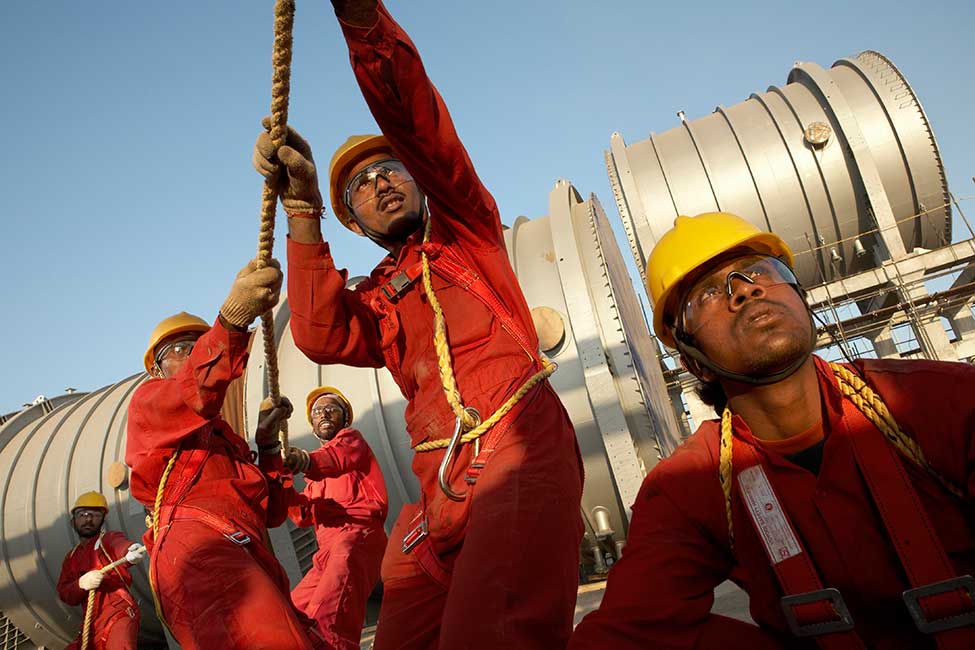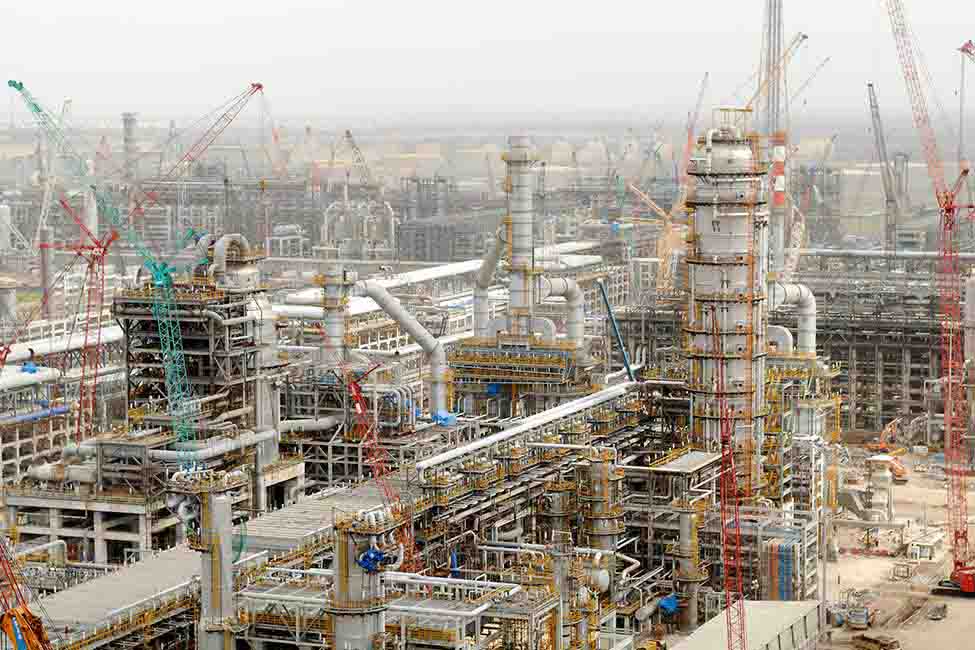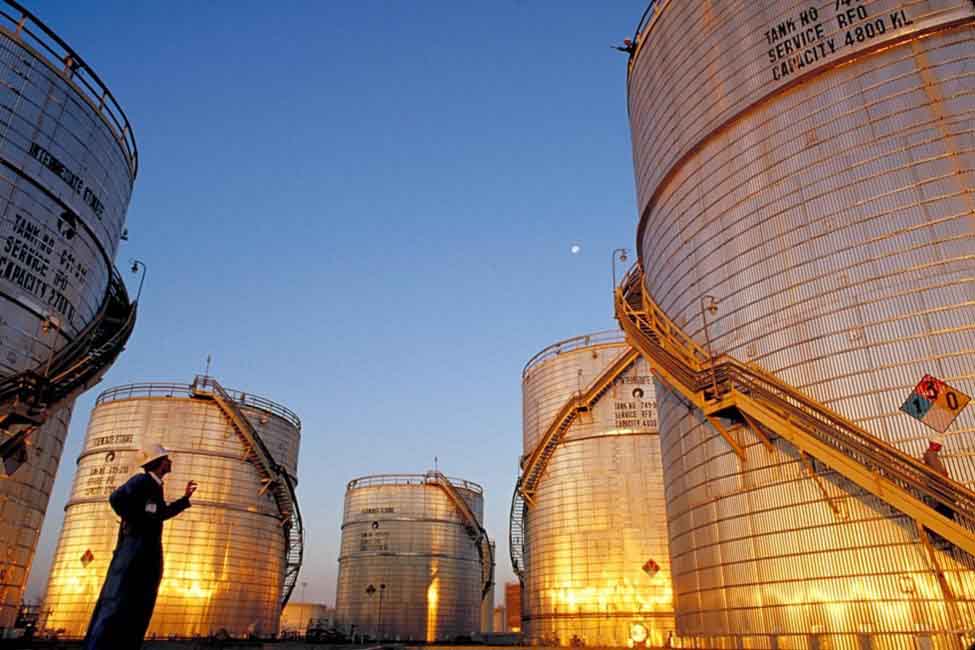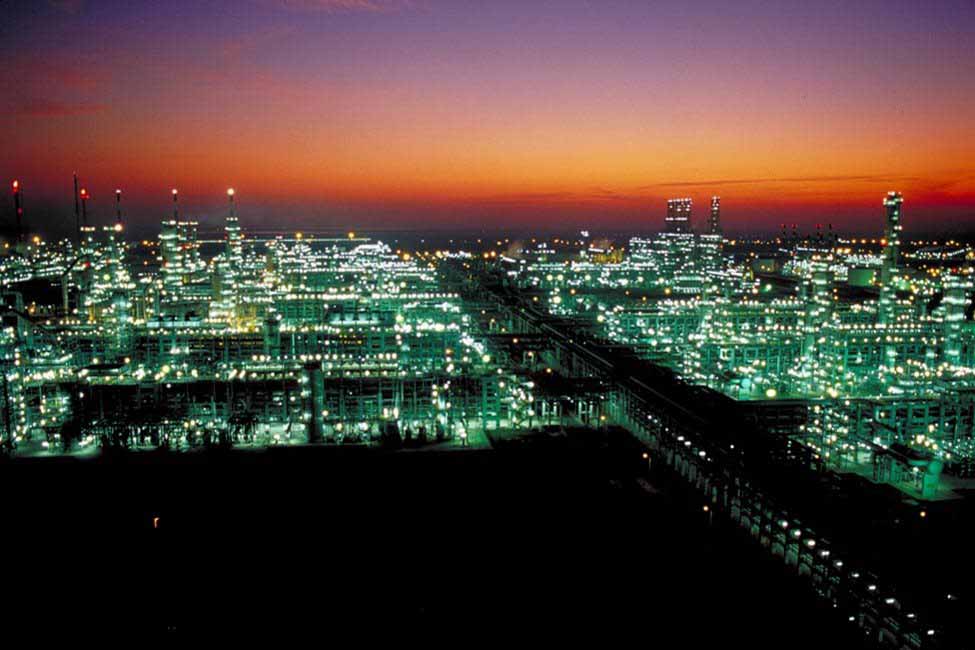We finished a second refinery, adjacent to the first in the West India state of Gujarat, in 2008, nearly doubling the facility's capacity to more than 1.2 million barrels per day. Bechtel and its worldwide team completed this massive project in a record time of less than three years.
The gasoline and diesel produced at Jamnagar is for export, predominantly to the United States and Europe. In addition to the fuels produced by the original refinery, it increased production of polypropylene, which is used to create such products as fibers, films, and household plastic goods.
70,000+ workers
At peak construction, the project employed more than 70,000 workers. In addition, Bechtel created a “virtual company” involving some 2,800 engineers and other professionals in 19 offices around the world—perhaps the most widely distributed workforce Bechtel has ever applied to a project.


